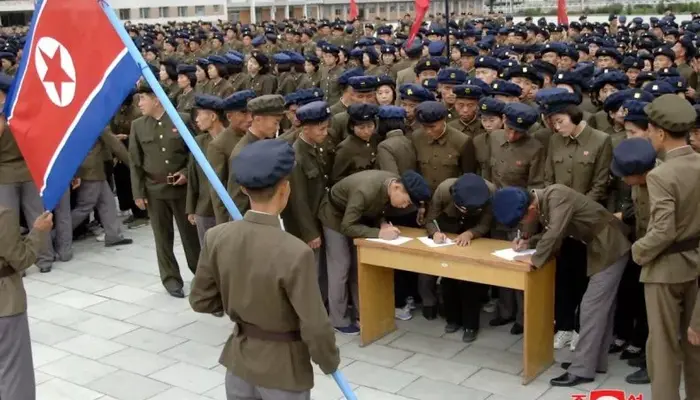South Korea’s military has accused North Korea of a “GPS jamming attack” affecting several civilian aircraft and vessels, raising regional tensions and posing a serious threat to transportation safety. The jamming operation, which started on Friday and continued into Saturday, disrupted GPS signals in South Korea’s West Sea (Yellow Sea), creating operational challenges for both maritime and air traffic. This escalation follows a series of provocations from North Korea and underscores the rising tension between the two countries.
Disruptions in South Korean Airspace and Waters
The South Korean Joint Chiefs of Staff (JCS) warned ships and aircraft operating in the affected area to remain vigilant due to North Korea’s GPS interference. Civilian aircraft and vessels in proximity to Haeju and Kaesong, North Korea, reported disruptions, though the South Korean military noted that its own operations remained unaffected. The JCS demanded North Korea halt its interference, stating it would hold the country accountable if the situation continued.
This recent incident reflects North Korea’s ongoing pattern of GPS interference. Similar jamming attacks were reported between late May and early June, when hundreds of aircraft and ships experienced positioning issues. In response, South Korea filed a formal complaint with the International Civil Aviation Organization (ICAO), which urged North Korea to cease such activities, citing risks to global aviation safety.
Increasing Security Tensions
This GPS jamming attack intensifies already high tensions on the Korean Peninsula. Over recent months, North Korea has conducted multiple ballistic missile tests, destroyed infrastructure near its border with South Korea, and launched balloons carrying trash into South Korean territory. Additionally, reports have surfaced of North Korean troops joining Russian forces in Ukraine, further straining international relations.
The recent incidents have heightened anxiety in South Korean airspace, especially given the potential of GPS “spoofing”—where North Korean signals override legitimate GPS signals, increasing the risk for commercial airlines and maritime vessels operating nearby. Aviation experts warn that such interference complicates navigation and could lead to severe incidents in the region’s busy air corridors.
Read: Australia Faces Unprecedented Whooping Cough Outbreak
Expert Analysis on North Korea’s Intentions
Yang Moo-jin, president of the University of North Korean Studies in Seoul, emphasized that understanding North Korea’s motives for the GPS jamming is crucial. Yang speculated that North Korea might be attempting to divert international attention from its recent troop movements, create psychological tension in South Korea, or retaliate for recent South Korean military drills. South Korea recently conducted missile tests, including a Hyunmoo surface-to-surface missile launch, demonstrating its readiness to counter North Korean threats. The Hyunmoo missile is integral to South Korea’s preemptive strike capability, known as the “Kill Chain,” intended to counter potential North Korean attacks before they materialize.
Rising Risks in South Korean Airspace
South Korea’s Yonhap news agency reported that, while the recent jamming signal was weaker than that experienced in the summer, it still created operational disruptions. Experts caution that even brief GPS interference poses a risk for commercial and private flights navigating the West Sea. As tensions persist, South Korean officials remain on alert for further provocations and potential risks that North Korea’s interference poses to civilian safety.
The frequency and intensity of these incidents underscore the fragile security situation on the Korean Peninsula. South Korea’s response and coordination with international agencies like ICAO reflect the growing need for comprehensive measures to mitigate risks and maintain safe navigation across air and sea channels.
Follow us on Google News, Instagram, YouTube, Facebook,Whats App, and TikTok for latest updates
